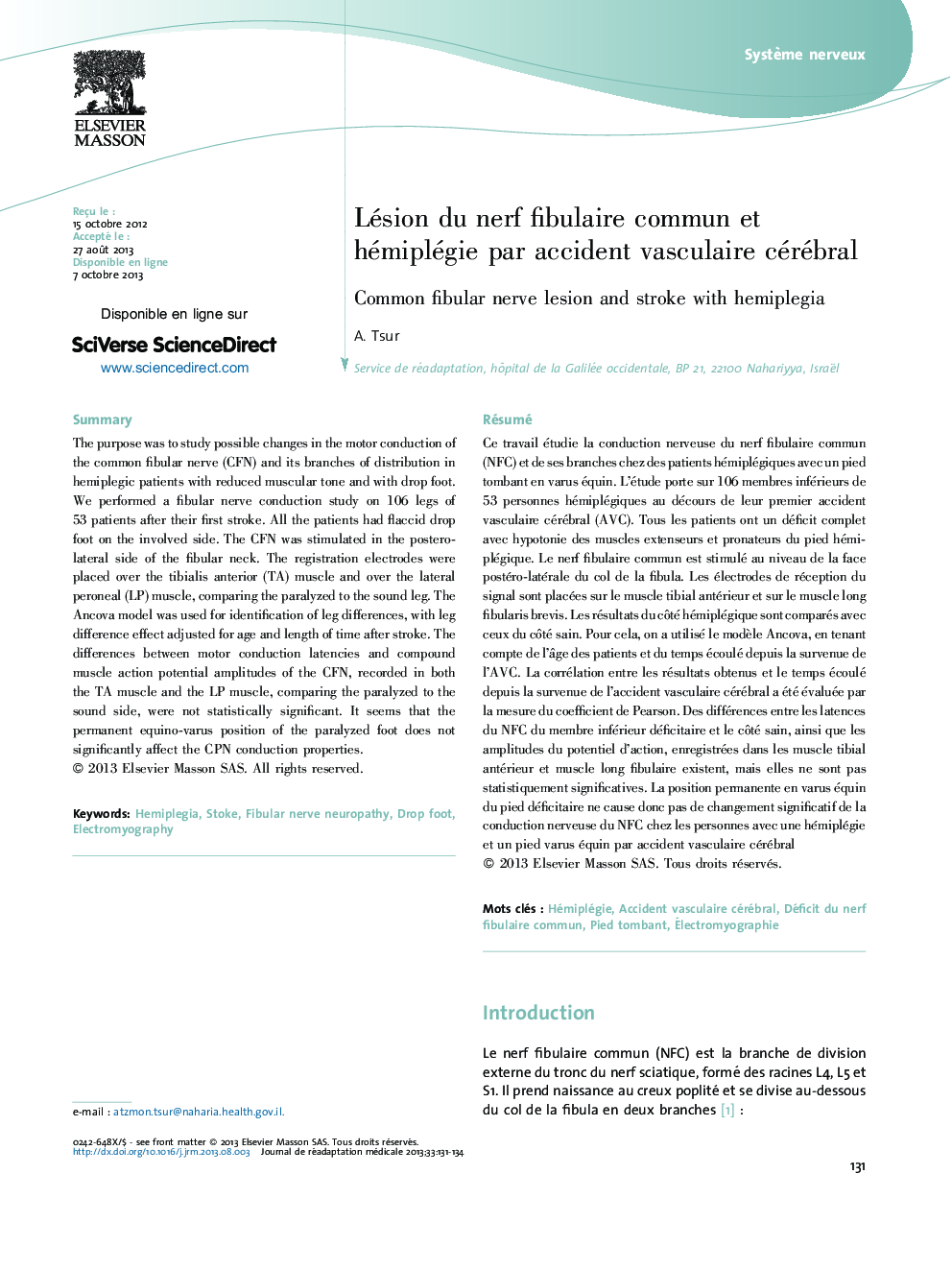| Article ID | Journal | Published Year | Pages | File Type |
|---|---|---|---|---|
| 2700850 | Journal de Réadaptation Médicale : Pratique et Formation en Médecine Physique et de Réadaptation | 2013 | 4 Pages |
Abstract
The purpose was to study possible changes in the motor conduction of the common fibular nerve (CFN) and its branches of distribution in hemiplegic patients with reduced muscular tone and with drop foot. We performed a fibular nerve conduction study on 106Â legs of 53Â patients after their first stroke. All the patients had flaccid drop foot on the involved side. The CFN was stimulated in the postero-lateral side of the fibular neck. The registration electrodes were placed over the tibialis anterior (TA) muscle and over the lateral peroneal (LP) muscle, comparing the paralyzed to the sound leg. The Ancova model was used for identification of leg differences, with leg difference effect adjusted for age and length of time after stroke. The differences between motor conduction latencies and compound muscle action potential amplitudes of the CFN, recorded in both the TA muscle and the LP muscle, comparing the paralyzed to the sound side, were not statistically significant. It seems that the permanent equino-varus position of the paralyzed foot does not significantly affect the CPN conduction properties.
Keywords
Related Topics
Health Sciences
Medicine and Dentistry
Orthopedics, Sports Medicine and Rehabilitation
Authors
A. Tsur,
